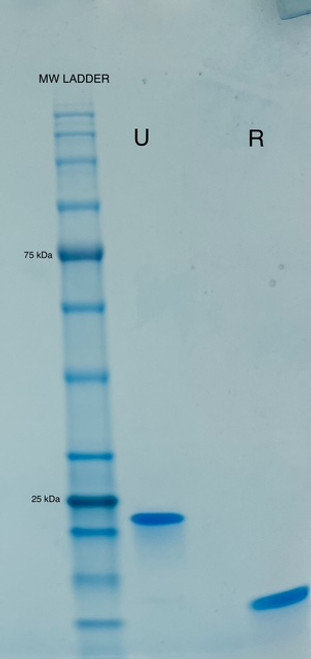β-NGF, a neurotrophic factor structurally akin to BDNF, NT-3, and NT-4, is part of the cysteine-knot family of growth factors, characterized by stable dimeric structures. This potent neurotrophic factor operates via its receptor β-NGFR, playing a pivotal role in the development and maintenance of the sensory and sympathetic nervous systems. Additionally, β-NGF functions as a growth and differentiation factor for B lymphocytes, boosting B-cell survival. The active form of Recombinant Human β-NGF is a non-covalently linked homodimer comprising two 13.5 kDa polypeptide monomers, each containing 120 amino acids and three disulfide bonds essential for biological activity.
|
Product Specifications
|
|
| Species | Human |
| Published species | Human, Rat |
| Expression System | E. coli |
| Amino acid sequence |
SSSHPIFHRG EFSVCDSVSV WVGDKTTATD IKGKEVMVLG EVNINNSVFK QYFFETKCRD PNPVDSGCRG IDSKHWNSYC TTTHTFVKAL TMDGKQAAWR FIRIDTACVC VLSRKAVRRA
|
| Molecular weight | 27 kDa |
| Class | Recombinant |
| Type | Protein |
| Purity |
≥ 98% by SDS-PAGE gel and HPLC analyses.
|
| Endotoxin concentration | <0.1 EU/µg |
| Activity |
Determined by the dose-dependent stimulation of the proliferation of human TF-1 cells. The expected ED50 is ≤ 1.0 ng/ml, corresponding to a specific activity of ≥ 1 x 10^6 units/mg.
|
| Conjugate | Unconjugated |
| Form | Lyophilized |
| Contains |
no preservative
|
| Storage conditions | -20°C |
CAUTION
For Research Use Only. Not for use in diagnostic procedures.

















